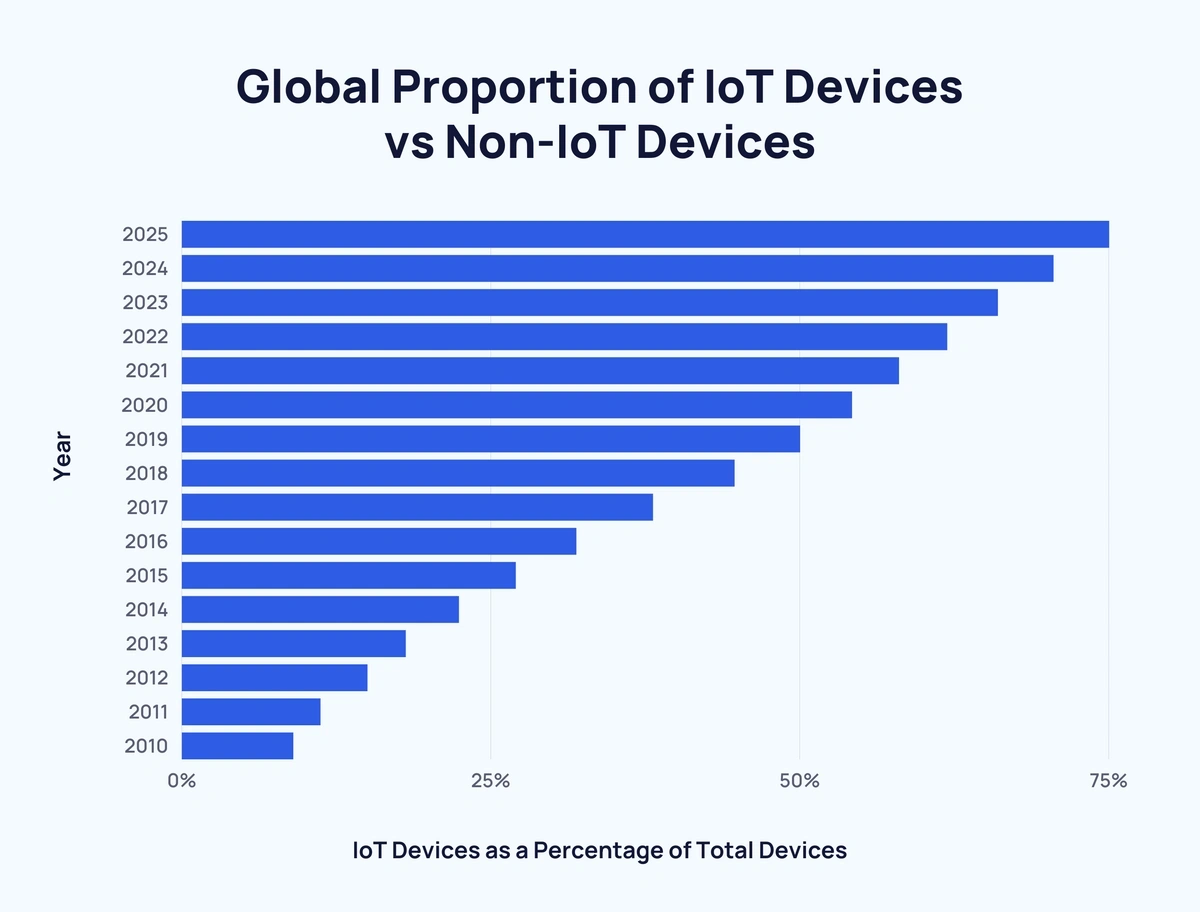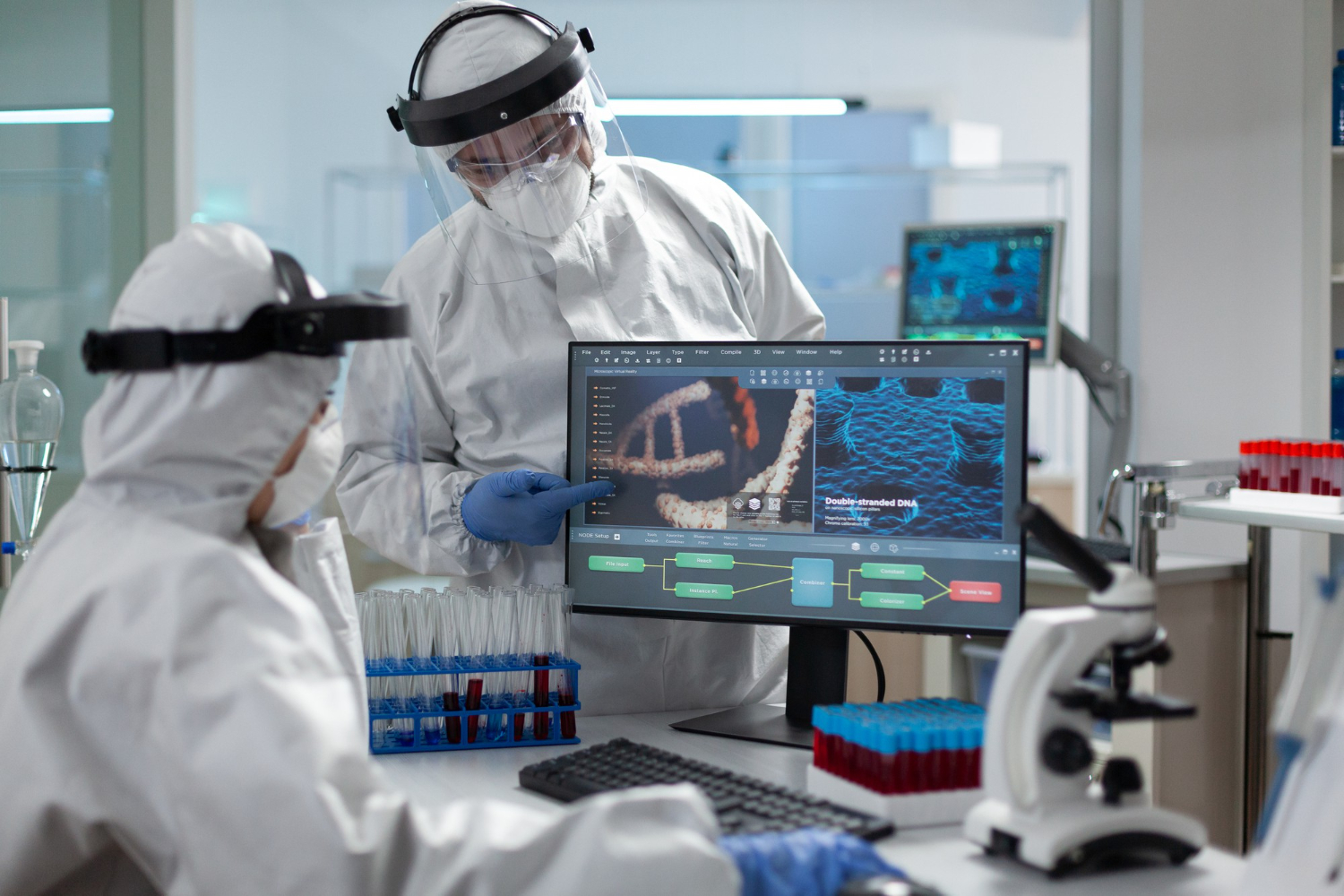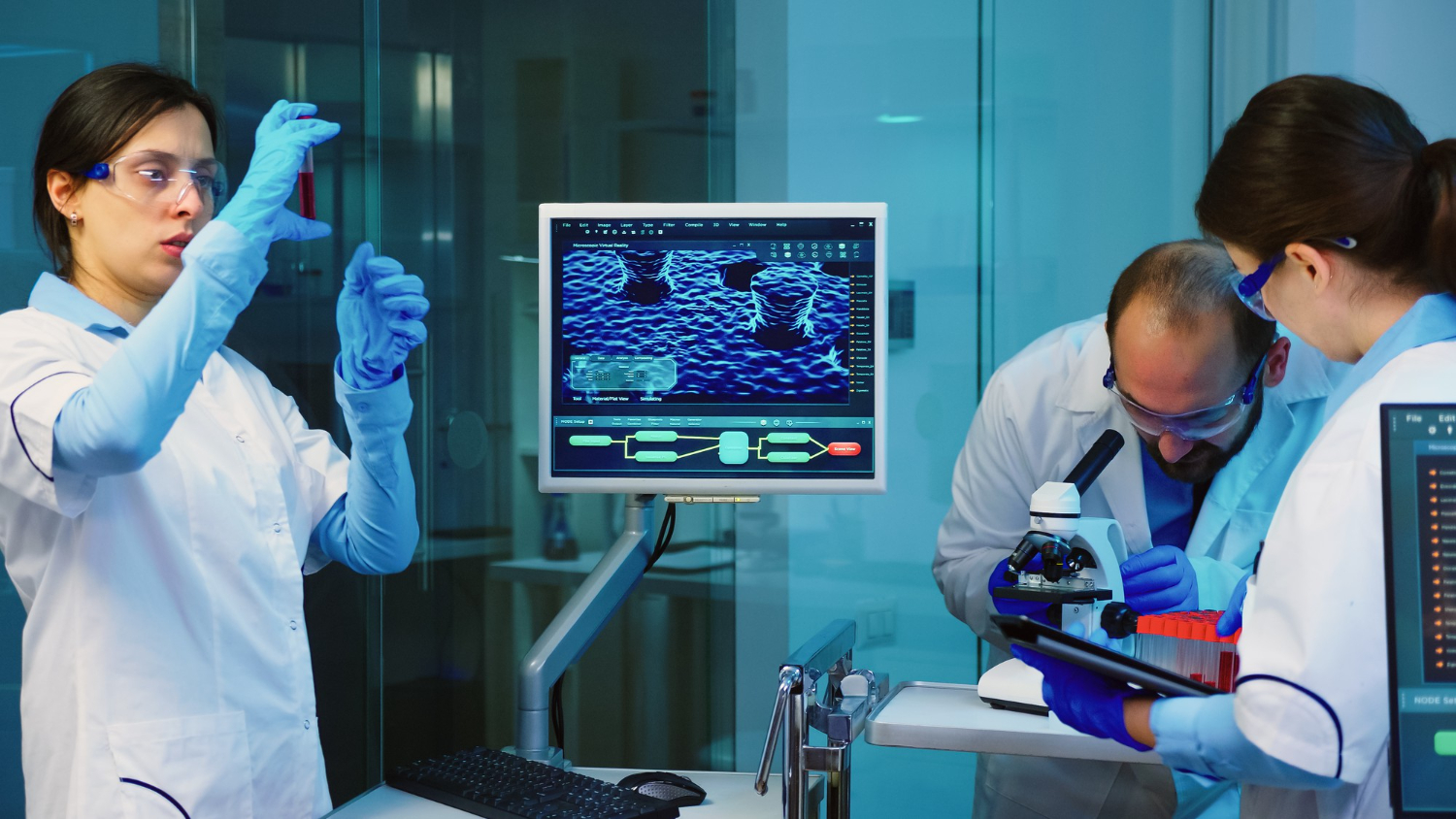Introduction
Edge computing is changing how we handle data by processing it closer to where it’s created. By doing so, edge computing reduces delays and saves bandwidth compared to traditional cloud computing. In cloud computing, data is processed in centralised data centres and can cause delays when quick responses are needed. Edge computing processes data locally on edge devices or nearby servers. It is ideal for applications requiring real-time data processing, such as autonomous vehicles, smart cities, and industrial automation.
Edge devices are key in this setup. They include IoT sensors, cameras, and edge servers that collect and process data at the network’s edge. For example, an edge server can analyse video feeds from a factory floor to monitor equipment performance as operations occur. It eliminates the need to send large amounts of data to the cloud.
The use of edge computing is rapidly growing. Gartner predicts that by 2025, 75% of enterprise data will be created and processed outside of traditional data centres and the cloud. This growth is driven by the need for faster data processing and the rising number of connected IoT devices, which is now more than 17 billion.
Understanding the components of a tech stack for edge computing can help businesses combine edge computing with cloud infrastructure. Companies can balance the advantages of both technologies to create advanced solutions. In this article, we’ll focus on the key elements and applications of an edge computing tech stack.
Key Components of a Tech Stack for Edge Computing
Edge computing relies on three main components: hardware, software, and networking. They each play a role in the tech stack for edge computing. Hardware includes edge devices, sensors, and servers that process data locally to reduce latency and bandwidth use. Software consists of edge operating systems, middleware, and platforms such as OpenStack and VMware Edge Compute Stack. These tools handle the development, deployment, and management of edge applications. Networking supports reliable communication between edge devices and central systems. Let’s look at each component in detail.

Types of Edge Devices: Sensors, IoT Devices, and Edge Servers
Edge computing is dependent on specialised hardware to process and analyse data close to the source. Key types of edge devices include sensors, IoT devices, and edge servers. Sensors can monitor various physical conditions such as temperature, pressure, motion, and environmental factors. They collect data in real time and are used in industries like manufacturing and healthcare. For instance, temperature sensors in factories can detect overheating and prevent equipment failure.
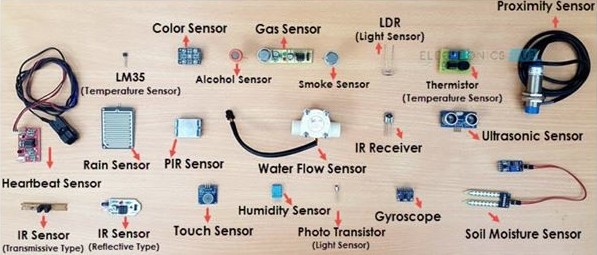
IoT devices include smart appliances, industrial sensors, and wearable technology. IoT devices are equipped with sensors and connectivity to collect and transmit data. Examples are smart thermostats in home automation and health monitors in healthcare. Edge servers are powerful computers located close to the data source. They handle substantial processing tasks that require more computational power than smaller edge devices can provide. Edge servers support applications like real-time video processing in smart cameras or AI-driven analytics in industrial settings.
How do you choose the right device for your application? Choosing the right hardware depends on the specific needs of the application. For instance, real-time applications like computer vision in autonomous vehicles or robotics require edge servers with high computational capabilities and low latency. In contrast, simpler applications like environmental monitoring might only need basic sensors and IoT devices. These devices can collect and process data locally to trigger immediate actions or send summarised data to central systems for further analysis.
Building the Software Foundation
Edge computing also requires sophisticated software to manage and process data efficiently. The main software components are edge operating systems, middleware, and edge computing platforms. Edge operating systems (OS) and middleware form the foundational software layer. Edge OS is designed to manage the hardware resources of edge devices. Middleware facilitates communication between the OS and applications. It provides services like data management, security, and connectivity.
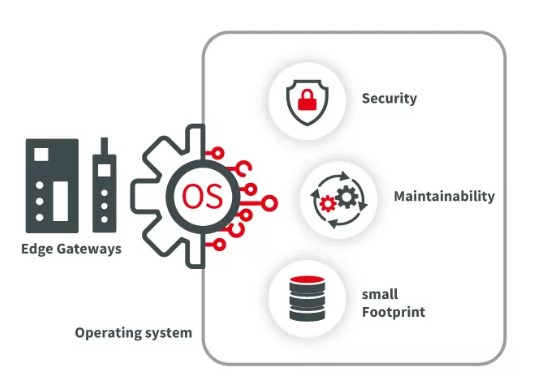
Some popular edge operating systems are EdgeX Foundry and BalenaOS. EdgeX Foundry is an open-source project hosted by the Linux Foundation that provides a common framework for industrial IoT edge computing. BalenaOS is designed for IoT devices and offers robust support for containerised applications. It makes deploying and managing edge applications easier.
There are also several platforms with tools for deploying and managing edge computing applications. For example, OpenStack is a cloud computing platform that also supports edge computing. So, users can deploy and manage edge applications alongside their cloud infrastructure. Another example is VMware Edge Compute Stack. It integrates edge computing with VMware’s broader cloud and virtualisation solutions.
Another interesting concept is edge-optimised runtime environments and orchestration platforms like K3s and Azure IoT Edge. These tools help deploy, monitor, and scale applications across distributed edge devices. By using these software tools, you can build a robust, scalable edge computing infrastructure capable of handling complex workloads efficiently.
The Role of Good Network Bandwidth and Connection
The most important aspects of an edge computing application are network bandwidth and connection quality. High bandwidth means that data can be transmitted quickly between edge devices and central systems. Strong, reliable network connections minimise latency and increase the speed of data processing. One way to ensure a strong network connection is to implement software-defined networking (SDN). SDN allows for more flexible and efficient network management by dynamically adjusting the routing of data based on current network conditions.
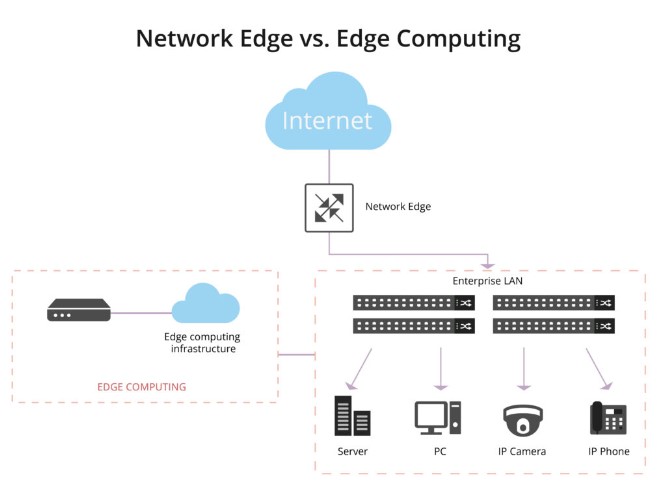
For example, an edge computing solution for autonomous vehicles can use SDN to manage how data travels through the network. SDN can adjust data routes on the fly to ensure that important information is processed quickly and efficiently. This could be sensor data needed to avoid obstacles. The vehicle can make real-time decisions, like stopping for a pedestrian or rerouting to avoid traffic, more reliably and faster because the network is constantly optimising for the best performance. The benefits of SDN are why the SDN Market is projected to grow from $9356.46 million in 2024 to $23584.42 million by 2032.
Data Processing in Edge Computing
Data can be processed on the edge in different ways. Here are some major methods of data processing in edge computing: data transformation and validation, real-time processing, and local decision-making. Edge nodes can pre-process and validate data to reduce the burden on backend servers. Real-time processing is useful for responding quickly to data changes. It is used for applications like inventory updates.
Local decision-making makes it possible for edge devices to autonomously manage tasks using predefined rules or machine learning models. Additionally, edge analytics offers real-time insights, and offline operation ensures continuity during network disruptions. Containerisation and Infrastructure as Code (IaC) increase scalability, portability, and efficient resource management in complex edge environments.
Several frameworks can help you process data on the edge. Let’s look at some examples.
Apache Kafka is a distributed streaming platform used to build real-time data pipelines and applications. TensorFlow Lite, a lightweight version of TensorFlow, allows machine learning models to run locally on edge devices. NVIDIA Jetson is a series of embedded computing boards supporting AI and machine learning applications that enable real-time processing on the edge.
The Connection Between Distributed Computing Models and Edge Computing
Distributed computing models can seamlessly distribute data and computation across multiple devices or nodes to increase performance, reliability, and scalability. Tasks are divided among multiple computers that communicate and coordinate their actions by passing messages to one another. In the context of distributed computing, edge computing can function alongside fog and cloud computing to create a seamless and efficient data processing environment.
For instance, edge devices can handle immediate, latency-sensitive tasks, while more complex data analysis can be offloaded to fog or cloud servers. A layered approach makes sure that critical data is processed quickly at the edge, while less urgent data can be handled by higher-layer systems.
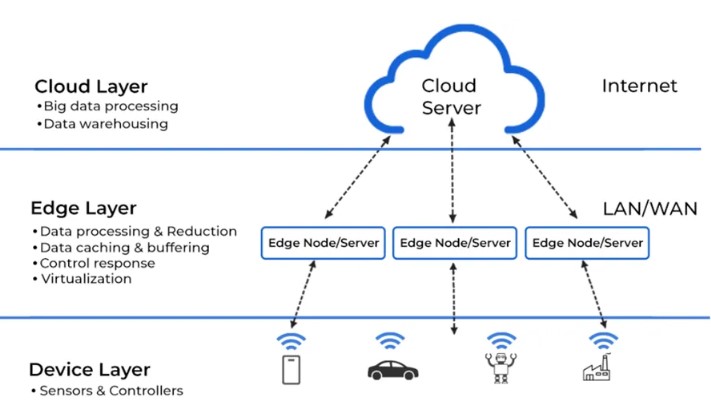
Let’s consider a smart city application. Traffic lights and surveillance cameras (edge devices) can process real-time data to manage traffic flow and enhance public safety instantly. The immediate adjustments needed for traffic management are handled locally to reduce latency. Meanwhile, the broader analysis of traffic patterns over weeks or months that require more computing power can be sent to fog or cloud servers for processing.
Industrial Applications of Edge Computing
Edge computing can also be very handy in industrial settings, especially with respect to AI in manufacturing. On a factory floor, many operations can be closely monitored using sensors and IoT devices. Edge computing allows for immediate data processing so that swift adjustments can be made to boost factory production efficiency.
It’s particularly useful when it comes to advanced robotics and predictive maintenance. These applications rely on rapid data analysis to prevent equipment failures and maintain continuous operation. Similarly, the process of handling quality control on production lines can be improved using edge computing. A real-time feedback mechanism allows for immediate corrective actions, maintaining high-quality output and minimising waste.
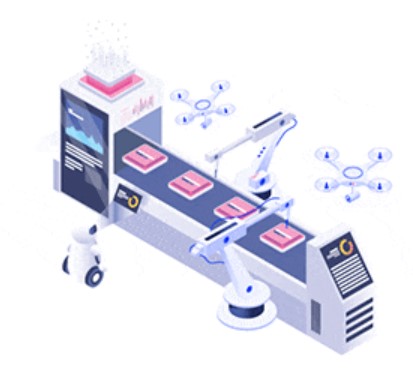
Healthcare Applications of Edge Computing
In healthcare, edge computing is improving patient care and operational efficiency. Real-time health monitoring can be done through wearable devices and medical sensors connected by edge computing. By monitoring a patient’s health so closely, it allows for immediate medical responses that can be life-saving. Most importantly, this application isn’t just for hospitals. Remote patient monitoring is gaining traction, thanks to edge computing.
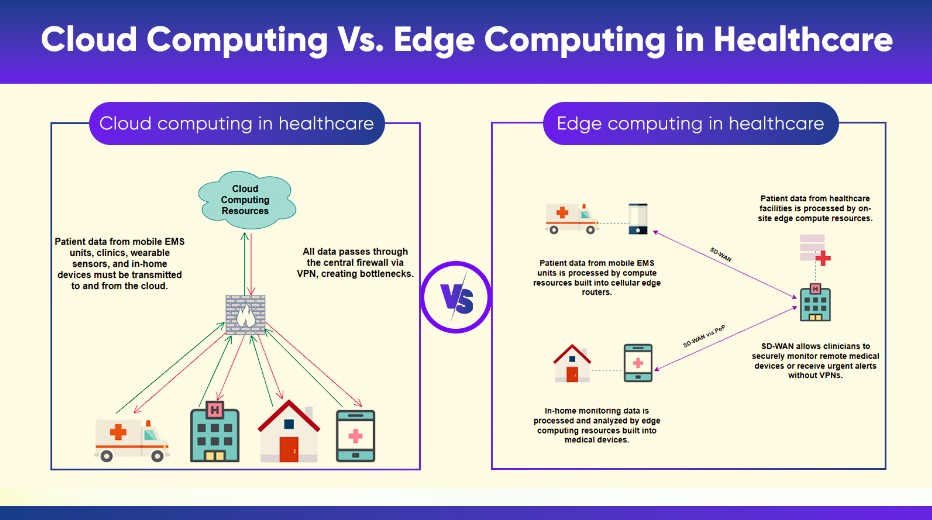
Edge computing also makes this process safer by maintaining data privacy and security by processing information locally. It supports compliance with stringent healthcare regulations. Furthermore, edge computing improves operational efficiency in hospitals by managing IoT-enabled medical equipment.
Challenges Related to Edge Computing
Implementing edge computing also comes with various challenges. Addressing the following challenges is essential for the successful deployment of edge computing solutions:
-
Data Management: Efficiently storing and processing the large volume of data generated by edge devices.
-
Network Reliability: Ensuring a dependable network connection and adequate bandwidth for smooth data transmission.
-
Data Security and Privacy: Implementing robust measures to protect sensitive data processed locally.
-
Integration with Cloud Models: Balancing the benefits of local processing with the scalability and flexibility of cloud resources.
Given these complexities, it is a good idea to involve specialists or AI consultants. Their expertise can help you navigate the intricacies of edge computing and build robust and efficient implementations tailored to your specific needs. That is exactly what we offer at TechnoLynx.
What We Can Offer as TechnoLynx?
At TechnoLynx, we pride ourselves on custom software development that meets the specific demands of incorporating edge computing into various sectors. Our team’s expertise can help ensure that your operations run smoothly and that large data sets are managed efficiently at the edge.
With our skills in edge computing, IoT, computer vision, generative AI, GPU acceleration, natural language processing, and AR/VR/XR, we can help you explore new possibilities for your business. We are dedicated to advancing innovation while maintaining strict safety and ethical protocols. If you are looking to transform your business with innovative edge computing solutions and need an AI consultant, contact us today, and let’s explore the future together!
Conclusion
Edge computing is changing how we process and manage data by bringing computation closer to the source. The shift from cloud computing to edge computing allows for faster and more efficient operations. Understanding the key components of a tech stack for edge computing, like hardware, software, networking, and data processing, enables businesses to fully take advantage of its power. Overcoming challenges and integrating edge computing with existing systems can boost performance and drive innovation. At TechnoLynx, we’re here to help you navigate these complexities and implement tailored edge computing solutions. Get in touch with us today to start your journey toward a smarter, more efficient future.
Sources for the images:
-
CIO Influence Staff Writer, 2023. Best Practices for Integrating Edge Computing in Healthcare. CIO Influence, 4 December.
-
Cisco Systems, Inc., 2024. What Is Edge Computing?
-
Copperpod IP, 2022. Edge Computing: A Distributed Computing Architecture. Copperpod IP
-
Dassault Systèmes, 2024. Edge Computing: The Drive for Smart Manufacturing.
-
Duarte, F., 2024. Number of IoT Devices (2024). Exploding Topics
-
Rakesh, R., 2018. IoT: Different Types of Sensors. LinkedIn
-
Wang, C., 2023. Fiber Optic Cabling Solutions. Cables-Solutions.
-
Welotec GmbH, 2022. Edge computing applications: Maximize performance by choosing an appropriate operating system. Welotec
References:
-
Duarte, F., 2024. Number of IoT Devices (2024). Exploding Topics.
-
Market Research Future, 2024. Software Defined Networking (SDN) Market Research Report – Global Forecast 2032.
-
Radiant Digital, 2024. The Evolution And Benefits Of IoT, SDN And Edge Computing. Radiant Digital.
-
Stackpole, B., 2022. The promise of edge computing comes down to data. MIT Sloan.

